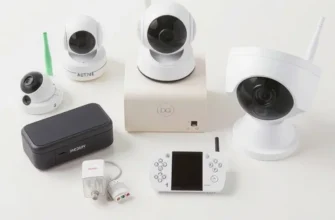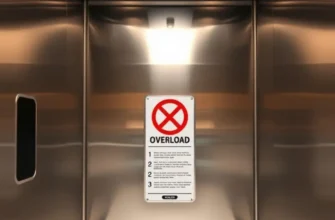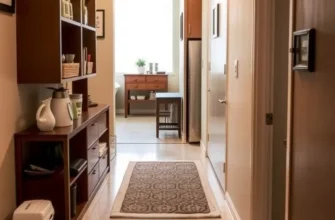Cooking is a cherished activity for many renters, often turning the kitchen into a hub of delicious aromas and family gatherings. However, it’s crucial to address safety measures to prevent cooking fires, which pose significant risks in apartment living. With limited space and shared walls, a fire can escalate quickly, affecting not only your apartment but your neighbors as well. Prioritizing fire safety while cooking can keep you, your loved ones, and your home secure. This guide will outline practical, easy-to-follow tips tailored specifically for renters. By understanding how to navigate potential hazards and establish a safer cooking environment, you can enjoy your culinary pursuits without the stress of accidents. So roll up your sleeves, gather your ingredients, and let’s explore essential cooking fire safety tips that are both manageable and effective in your apartment.
Understanding Fire Hazards in Your Apartment

Cooking at home offers a comforting sense of control and creativity. However, it also introduces specific fire hazards, especially in apartment settings. Understanding these hazards is crucial for maintaining a safe environment.
One prevalent risk is unattended cooking. It’s easy to start simmering a pot and get distracted by a phone call or a TV show. Even a momentary lapse in attention can allow food to ignite. It’s essential to remain in the kitchen when using heat.
Grease fires represent another significant threat. Using too much oil or cooking at temperatures that surpass the smoke point of oils can lead to ignition. In such cases, oxygen fuels the fire and escalates quickly. A snug-fitting lid or a fire blanket can smother these flames effectively.
Apartment kitchens often have limited space. Overcrowding surfaces with flammable materials, such as dish towels and paper, can increase risks. Maintain clear surfaces, especially near stoves and ovens, to impede the spread of potential fires.
Electrical appliances pose unique risks. Damaged cords or overloaded outlets can spark fires. Regularly inspect appliance cords for wear, and limit the number of devices plugged into a single outlet. This ensures appliances operate safely within their designed capacities.
Smoke detectors are vital. If they’re missing or malfunctioning, alert your landlord immediately. These devices provide early warning and are often the difference between extinguishing a small flame and needing to evacuate the building.
Additionally, counter clutter can obstruct efforts to extinguish a fire. Ensure fire extinguishers are accessible and everyone in the apartment knows how to use one confidently. Prioritize installing extinguishers rated for grease and electrical fires in the kitchen.
For more specific safety practices within living spaces, consider reviewing DIY Apartment Window Seat ideas. Although primarily decor-focused, such resources emphasize maximizing space and improving safety indirectly.
Prioritize regular oven and range maintenance to prevent fire hazards. Crumbs, grease buildup, or malfunctioning elements can spark unexpectedly. Cleaning after use not only prolongs appliance life but safeguards your apartment and neighbors.
Understanding apartment-specific fire hazards in the kitchen is the first step. By adopting proactive measures and keeping these risks in check, you ensure a secure living space and peace of mind while cooking.
Practical Cooking Safety Tips for Renters

Apartment living requires special attention to cooking safety due to often limited space and closer proximity to neighbors. Enhancing your awareness and practices not only safeguards your well-being but also preserves the community. Here are some actionable steps to boost your kitchen safety:
Preventative Measures
One of the most crucial steps in maintaining a safe kitchen environment is being proactive. Start by establishing a routine to clean spills immediately to prevent slips and falls. Ensure that cooking appliances, like stoves and microwaves, are not overcrowded with cookware, and avoid placing flammable items like dish towels or paper bags near heat sources. When cooking, particularly with oils, always use the appropriate pan size to minimize the risk of grease spills which can ignite easily.
Additionally, never leave cooking unattended. If you must answer a call or leave the room, set a timer as a reminder to return promptly. This habit is especially vital when using high-heat cooking methods such as frying or grilling.
Maintenance Suggestions
Regular maintenance of your kitchen appliances plays a significant role in preventing potential hazards. Frequently inspect and clean your stovetop and oven, ensuring they are free from grease build-ups that could ignite. Check the seals and cords of electrical appliances for any wear and tear and report any fixtures in need of repair to your landlord immediately.
Ensure your smoke detectors are functional by testing them monthly and replacing batteries annually. In case of gas-powered appliances, be alert for any unusual scents which might indicate a gas leak, and ensure adequate ventilation by using exhaust fans or opening windows as you cook.
Essential Kitchen Items
Equipping your kitchen with the right tools can help you manage emergencies effectively. Keep a small, residential-grade fire extinguisher within easy reach, and familiarize yourself with its operation. An all-purpose ABC extinguisher is suitable for most small kitchen fires. A fire blanket can also be a useful tool for smothering small flames, especially those that might occur on the stovetop.
A well-stocked first aid kit is essential for dealing with minor cuts, burns, and other accidents. Position it in an easily accessible location where you and your household members can quickly access it if necessary.
Mindful Organization
Organizing your kitchen efficiently contributes significantly to safety. Use storage solutions to keep countertops clear, reducing the risk of unintentional fires. For more ideas on apartment-friendly organization, check out this guide that explores efficient use of baskets and containers.
By implementing these precautions and practices, renters can create a secure cooking environment that minimizes accidents and potential hazards. These simple but effective strategies form a foundational part of a broader effort to ensure household safety and peace of mind in your apartment.
Final words
With the right knowledge and resources, you can significantly reduce the risk of cooking fires in your apartment. By understanding potential hazards and implementing practical safety measures, you can continue to enjoy cooking without worry. Regular maintenance of fire safety equipment, practicing vigilant cooking habits, and always being prepared can help minimize risks and create a secure environment. Remember, safety is not just a priority—it’s a necessity. Embrace these cooking fire safety guidelines and transform your kitchen into a safe space where culinary creativity can flourish.
